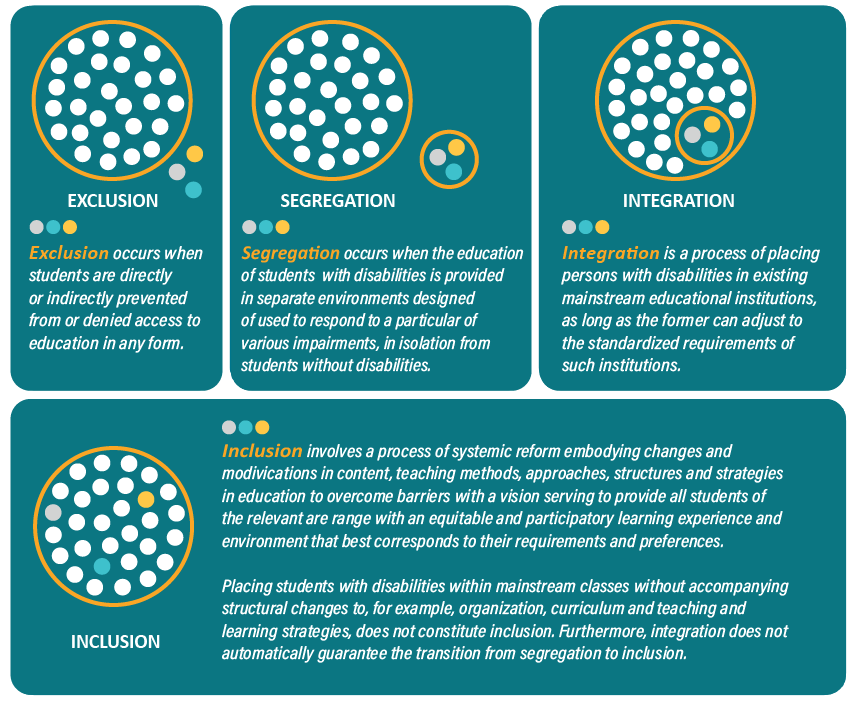You are here
Context Activity

Review the circles in the image below. The first three circles are a visual insight into unintended consequences. By looking at the placement of circles that differ, we see marginalization, tokenization and segregation. The culture in those circles can be marked by an “us” versus “them” mentality, particularly in interactions between students and educators and educators and families. And psychological safety is compromised at varying levels due to assaults, insults and invalidation, which may or may not be met with support from school or district leadership. In these three circles, the focus is on “othering.” Fear, mental and physical insecurity, lowered expectations and “self-fulling prophecies” of lower achievement and higher discipline infractions flourish there.
Conversely, the final circle – “Inclusion” – is a state of intentionality where school and district leaders consciously override deeply ingrained implicit biases and stereotypes at the thought, action and appreciation levels. Assets across all cultures are now recognized, norms are co-created with the school community, and beliefs about all students are affirming. The consequences are also intentional: students and families feel welcomed, spaces are inclusive, and all are encouraged and given adequate supports and opportunities to thrive.
Another key distinguishing feature here is that unlike its predecessors, Inclusion does not focus on fear or othering, or assumptions based on labels. Rather, Inclusion focuses on our practice. In other words, are we underserving our families? If so, who? And how? Problem-solving mode now takes the focus off students and families and onto how we have thought about policies and procedures, supports, curriculum and instruction, and resource allocation.
Curiosity and continuous self-reflection here are key. We begin going outside ourselves and our usual peer group for all the answers. Instead, we turn to the school community members we serve and ask for both input and feedback, reflecting thoughtfully on how to use the input and feedback before taking action.


Reflect on the current reality of your learning environment.
- Which circle(s) reflect the culture of your school community?
- What factors are contributing to your current school environment? What would the experiences of students and their families be as a result?
Reflect on the context of your school to help generate evidence of success and opportunities.
Prompts: Consider evidence at the classroom, grade level, content area and school level.
- Evidence of students embracing and celebrating their cultural identities
- Opportunities for students to embrace and celebrate their cultural identities
Prompts: Consider evidence from students, teachers, families and staff.
- Evidence that students feel a sense of belonging
- Opportunities for students to feel a sense of belonging
Next Steps
-
Discuss your reflections with others to gain their perspectives and augment your evidence. What was confirmed? What was challenged?
- Examine data that might reflect areas of strength or opportunity. What data supported your reflections? What data was surprising?
When exploring local data, it is important to consider comparison points. The next section provides guidance on exploring and considering data.

This page is maintained by the Federal Programs and Supports Unit.
Please help us keep it current by reporting any issues, inaccurate information, or suggestions for improvements.







Connect With Us





